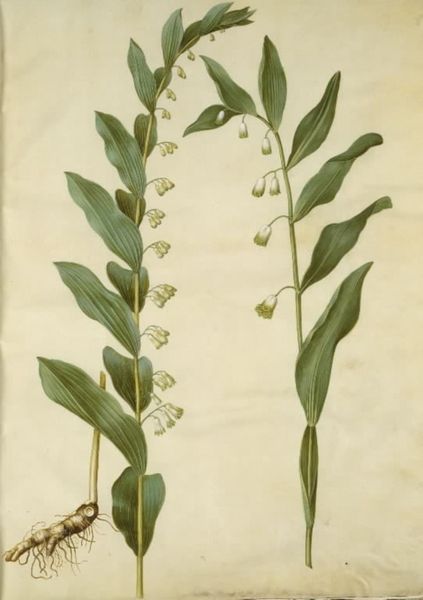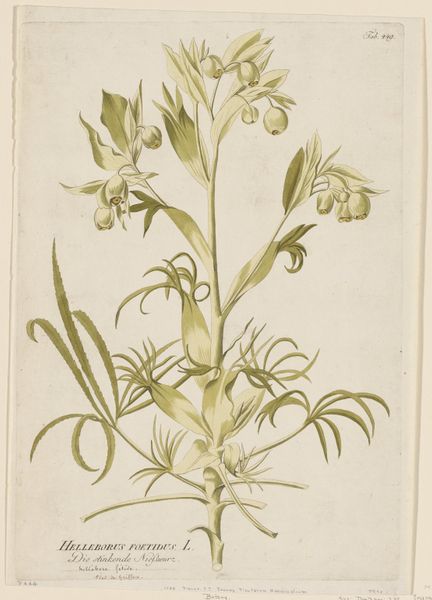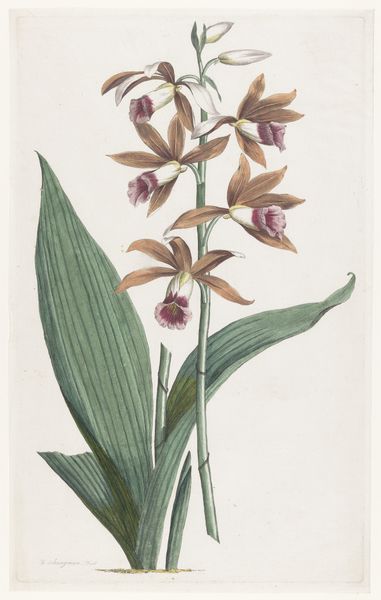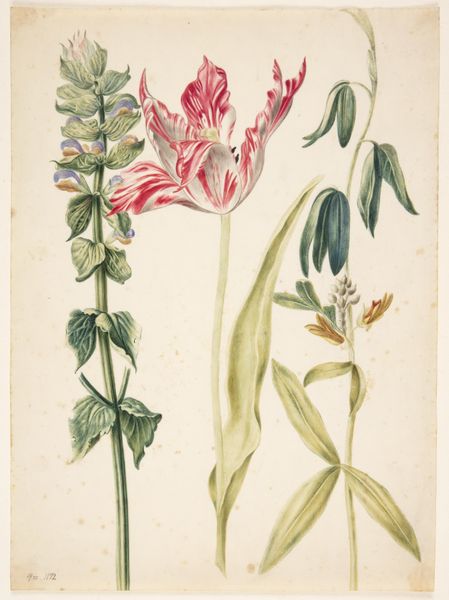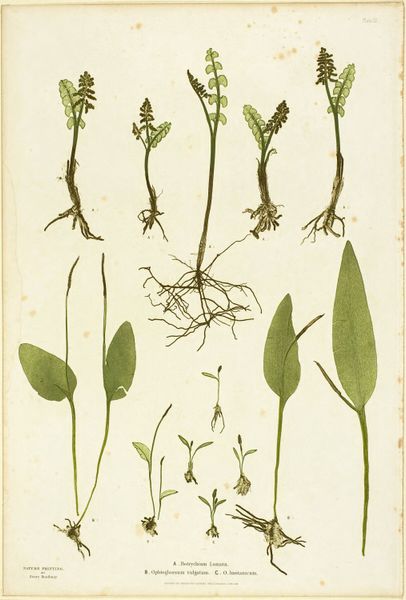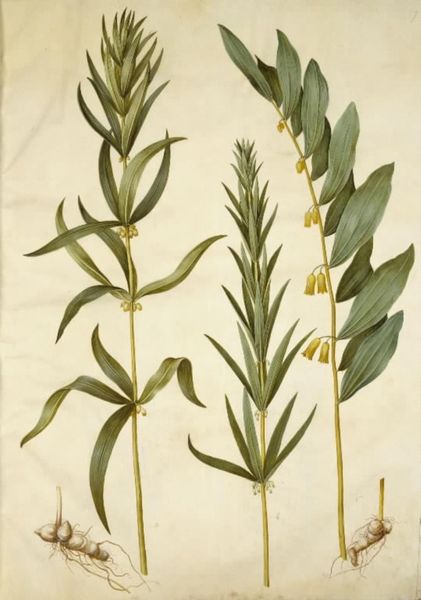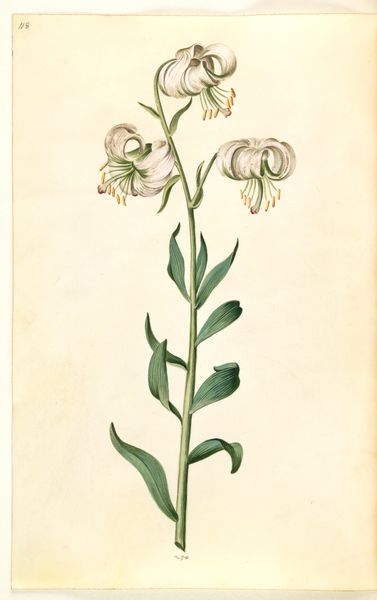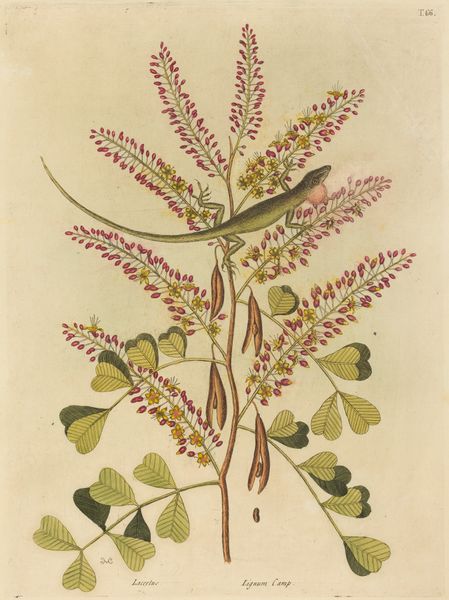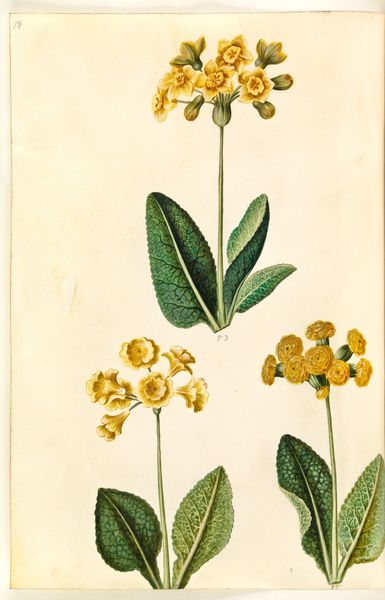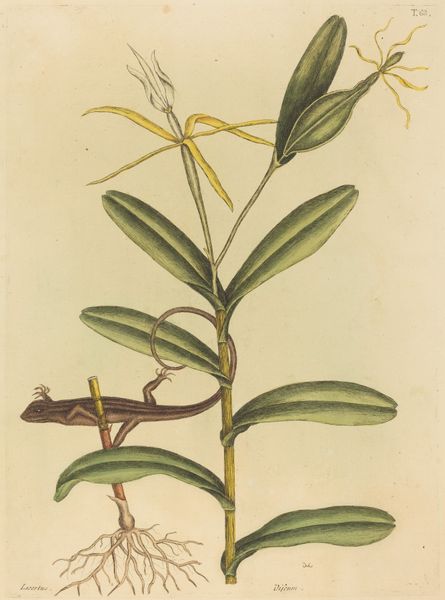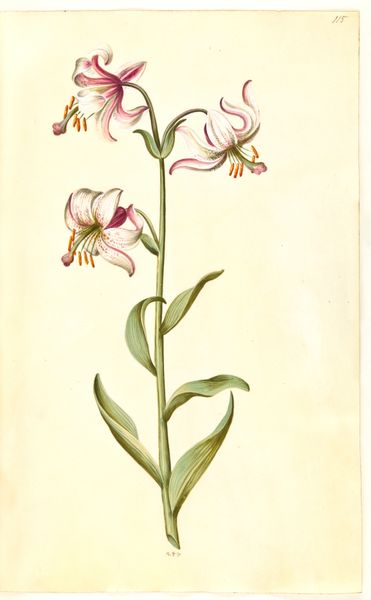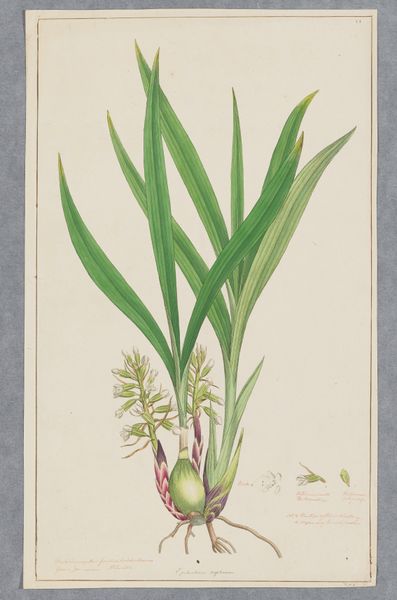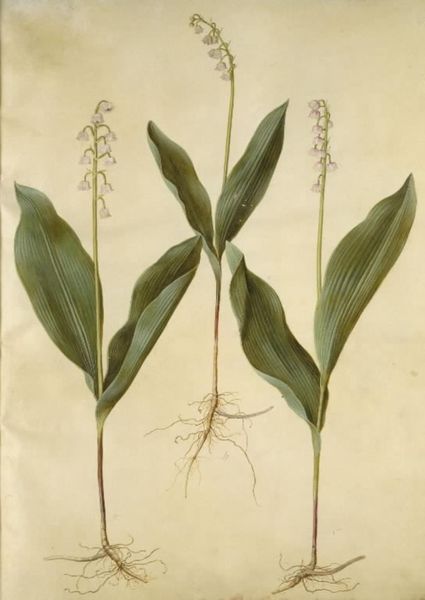
Convallaria majalis rosea (rød liljekonval); Convallaria majalis (liljekonval) 1635 - 1664
0:00
0:00
drawing, gouache
#
drawing
#
still-life-photography
#
gouache
#
botanical illustration
#
watercolour illustration
#
botanical art
Dimensions: 375 mm (height) x 265 mm (width) x 85 mm (depth) (monteringsmaal), 358 mm (height) x 250 mm (width) (bladmaal)
Editor: This drawing by Hans Simon Holtzbecker, created sometime between 1635 and 1664, titled "Convallaria majalis rosea (rød liljekonval); Convallaria majalis (liljekonval)," depicts two sprigs of Lily of the Valley using gouache. I'm immediately drawn to the contrast between the vibrant green leaves and the delicate, almost porcelain-like, flowers. What visual elements stand out to you in this composition? Curator: The formal arrangement strikes me. Note the meticulous detail in rendering the veining of the leaves and the bell-like shape of the blossoms. Consider the structural integrity maintained through line and form. Do you observe any tension or dialogue between the two sprigs? Editor: I see it now! The contrast of colors - a sprig of white lilies and one of pink, both sharing very similar form and texture, creates a visual harmony between them, almost mirroring each other. It’s like the artist created balance in an assymetrical composition. Is that an accurate assessment, considering his botanical perspective? Curator: Precisely. Holtzbecker's scientific purpose doesn't negate artistic intention. Notice the subtle gradations of color within the leaves. He moves to the structure itself and invites the viewer to discern its components. Does the rendering give a feeling of volume or flatness to your eyes? Editor: There's definitely a flatness, but also a strong sense of realism because of the fine details in the flowers. I was so focused on the details that I missed the nuances of composition. Curator: These botanical drawings compel us to engage with the underlying architecture of natural forms and with representational strategies within the visual language of botanical art. Editor: It makes so much sense now! Thanks for shedding light on this unique piece!
Comments
No comments
Be the first to comment and join the conversation on the ultimate creative platform.
